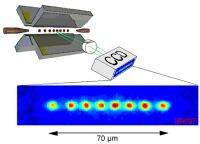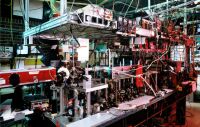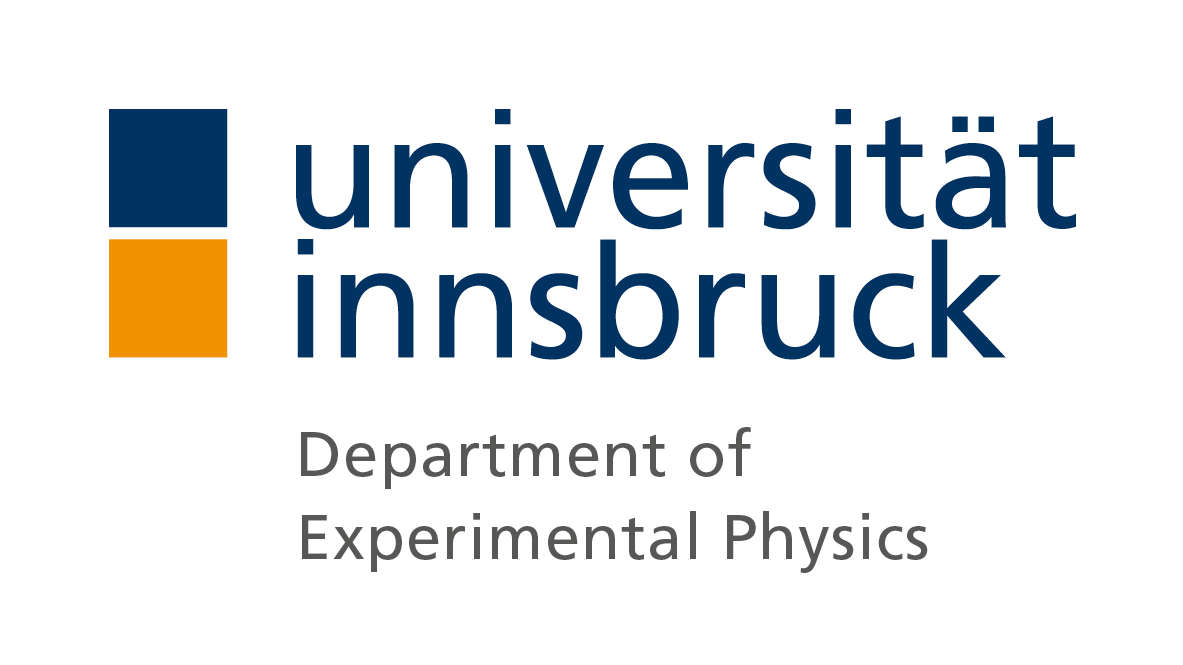Control and Measurement of Three-Qubit Entangled States
Christian F. Roos, Mark Riebe, Hartmut Häffner, Wolfgang Hänsel, Jan Benhelm,
Gavin P. T. Lancaster, Christoph Becher, Ferdinand Schmidt-Kaler, Rainer Blatt
Science 304, 1478-1480 (2004)
Quantum computers
Computers and the exchange of digital data have become ubiquitous in everyday life. All digital information is processed and stored as bits, taking on the values of either 0 or 1. In quantum information theory, the concept of a bit is replaced by its quantum-mechanical counterpart, the quantum bit or qubit. Contrary to a classical bit, the state of a qubit is not restricted to the basic states |0> and |1>, but can take on any superposition of these two states. The ability of qubits to be in superposition states is fundamental to quantum information theory, offering the prospect of solving certain problems much more efficiently than classical computers. When a qubit is read out, its quantum state is most likely to be a disturbed or destroyed altogether. Quantum computation requires complex states of many qubits to be created and single qubits to be read out without disturbing the remaining qubits.
In its issue of June 4, the journal "Science" has published articles describing ion trap experiments performed at the Institut für Experimentalphysik, Universität Innsbruck, and the National Institute of Standards and Technology, Boulder (USA). Both experiments demonstrate the deterministic entanglement of three qubits, encoded in the atomic states of three ions. In addition, selective read-out of a single qubit is shown to be possible in our experiment.
In our experiment, we trap three calcium ions in a Paul trap and entangle these atoms by a sequence of laser pulses. In this way, we put the ions into a peculiar state where the state of the whole system is well-known even though the individual state of a single ion is complete undeterminate. The notion of entanglement was put forward by the austrian physicist Erwin Schrödinger at around 1930. There are two inequivalent classes of three-particle entanglement: in GHZ states the qubits are maximally correlated so that all entanglement can be destroyed by a single measurement whereas in W-states the qubit correlations are not as strong as in GHZ states but entanglement may survive the measurement process.
What is new about the experiments ?
Each quantum bit is encoded in a trapped 40Ca ion, the state |1> being represented by the electronic ground state S1/2, the state |0> by the metastable D5/2 state (life time t=1,17 s). The atomic states are deterministically manipulated by exciting the ions on the S1/2-D5/2 quadrupole transition with a laser beam.
In the "Science" article we describe how to generate GHZ-states |1>|1>|1>+|0>|0>|0> and W-states |0>|1>|1>+|1>|0>|1>+|1>|1>|0> by a sequence of laser pulses. Measurement of a W-state's qubit projects the other two qubits either onto a the product state |1>|1> or the Bell state |0>|1>+|1>|0>, the state depending on the measurement result. By developing a technique for selective read-out of a single qubit, we veryfied this process experimentelly. For a GHZ state the atoms are maximally correlated. Therefore, a similar measurement would completely destroy the entanglement . However, it is possible to perform a measurement in the {|0>+|1>,|0>-|1>} basis instead of the {|0>,|1>} basis. If a qubit is measured in this basis, the remaining qubits will be projected into either one of two Bell states. By applying this technique to the state |1>|1>|0>+|0>|0>|1>, we obtain either |0>|1>+|1>|0> or |0>|1>-|1>|0>. Conditioned on the measurement result, we can apply further laser pulses in order to deterministically transform the GHZ state into the Bell state |1>(|0>|1>-|1>|0>).
For a detailed account of our experiments, see the following slide presentation (2.6 MB), Download
Related experiments
- Generation of GHZ states of three Be-ions (NIST,Boulder),
- photonic W-states (LMU München),
- GHZ-states in cavity-QED (ENS, Paris)
 The Innsbruck linear ion trap
The Innsbruck linear ion trap
In our experiments, we use the ion trap shown on the left. The trap consists of four metal blades and to metallic tips. To the blades, we apply a voltage of several hundred volts at a frequency of 23 MHz whereas the tips are held at voltage of +1000 V. This creates an electric field that confines positively charged calcium ions to the center of the trap. If the ions are cooled by laser light, it is possible to store them for several days.
 Detection of the ions
Detection of the ions
For detecting the ions, we illuminate them with a laser beam that excites the S1/2 to P1/2 transition. The laser cools the ions' motion and makes them emit fluorescence photons. Part of the fluorescence is collected by a lens and imaged onto the chip of a CCD camera. A photomultiplier (not shown) serves as a second independent detector.
 Experimental setup
Experimental setup
This photo shows the experimental setup. On the left hand side, the photomultiplier setup (red) can be seen. Next to it, there is the vacuum vessel housing the ion trap. A number of vacuum windows allow for focussing laser beams to the ions. On the other side of the vacuum system you can see the CCD camera and a box containing the optics used for addressing single ions with a laser.
We are financially supported by Universität Innsbruck, the Austrian research fund (FWF) within the program "Control and Measurement of Coherent Quantum Systems", the European networks QGATES and CONQUEST, IQI, ARO and the Austrian Academy of Sciences.

